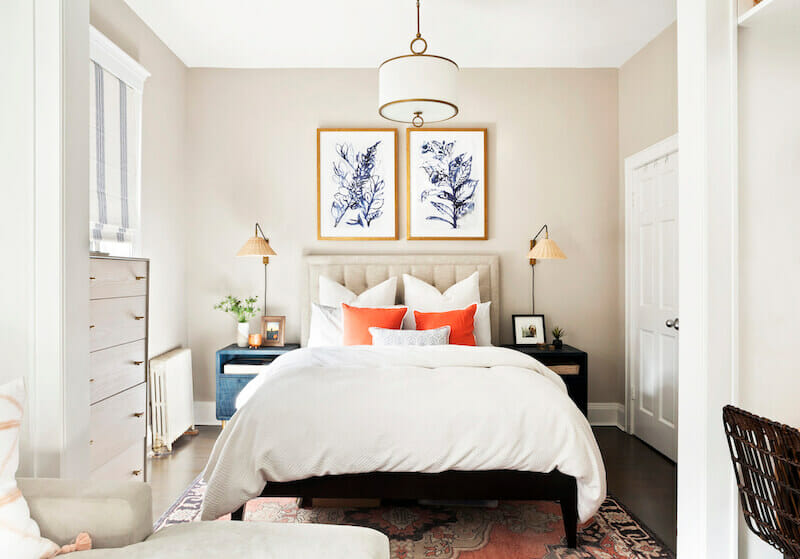After our peek at spring-inspired style updates, I have been looking forward to talking with Sweeten interior design experts to answer a long-standing question of mine: what does it cost to work with an interior designer? I needed to check my ego at the door for this one – I know I need professionals for home renovation projects, but I should be able to pick out my own couch…right? After talking with three of Sweeten’s most successful interior designers, I have a very different outlook on that front. For the basics on pricing, I caught up with Sweeten Expert Joy, Sweeten Expert Maneli, and Sweeten Expert Jill.
Joy, Maneli, and Jill helped me clear up one misconception right off the bat: interior designers are equipped to do much more than pick out furniture. Whether you are planning to gut renovate your home or looking for a way to update what you already have with new pieces, interior designers can step in at any stage in the process and lend expertise that ranges from wall placement, technical wiring choices, floor and tile selections, lighting and layout, and then continue until the last decorative pillows and desk accents are placed. “Furniture, window treatments, millwork design, lighting, flooring, AV, landscape selection, painting, and plaster types…interior design involves the knowledge of electricity, plumbing, wall construction, etc, all beyond creating the coziest of sitting areas,” explained Joy. So with such a wide range of services, where do they start with pricing?
Size, Scope, and Schedule
It sounds like the key elements of budget planning involve space size and scope of work (the homeowner’s goals for the project and initial thoughts on the corresponding budget). The good news here is that homeowners can maintain a lot of control over the final budget of the project. If you’ve been following our kitchen and bathroom pricing guides, you know that for some renovation projects, you need to spend thousands of dollars on behind-the-scenes structural and technical costs regardless of how high-end you want the end result to be. With interior design projects, the bang for your buck feels more predictable and impactful, because you are spending on items that you can see and feel, and you have more control over the relationship between what you pay and what you get.
Options for Structuring Costs
You can probably expect your interior designer to propose a few options for setting the budget:
1. flat fees for different packages of service
2. hourly fees for consultation and visits
3. 20% to 35% mark-up on purchases and services (like contractor oversight), or a commission based on the cost of planned construction (if renovation work is happening)
4. a mix of these options to allow for more flexibility
If you are gut-renovating and relying on your interior designer for full design services, you can expect to spend around $10 per square foot on design services alone. At this level, your interior designer is deeply involved in the project from start to finish and is sourcing, purchasing, and ensuring the delivery and installation of every visible aspect of your home. If you are gut-renovating a 1,000 square foot property, you can expect to pay $10,000 on design services, separate and apart from the cost of materials. If the scope of your project involves highly specialized selections or high-end and exclusive artisan work, you can expect the design cost per square foot to rise accordingly.
Photos below featuring work in Manhattan by Sweeten Expert Joy
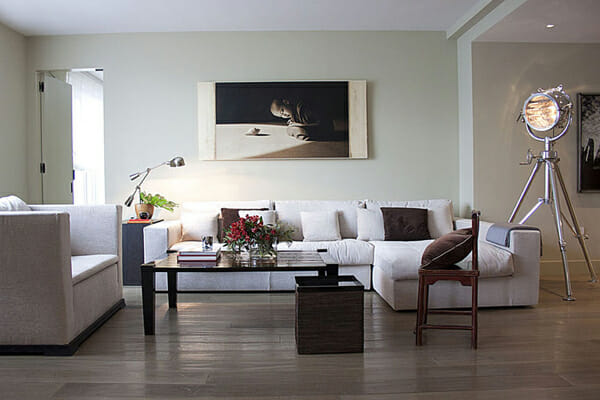
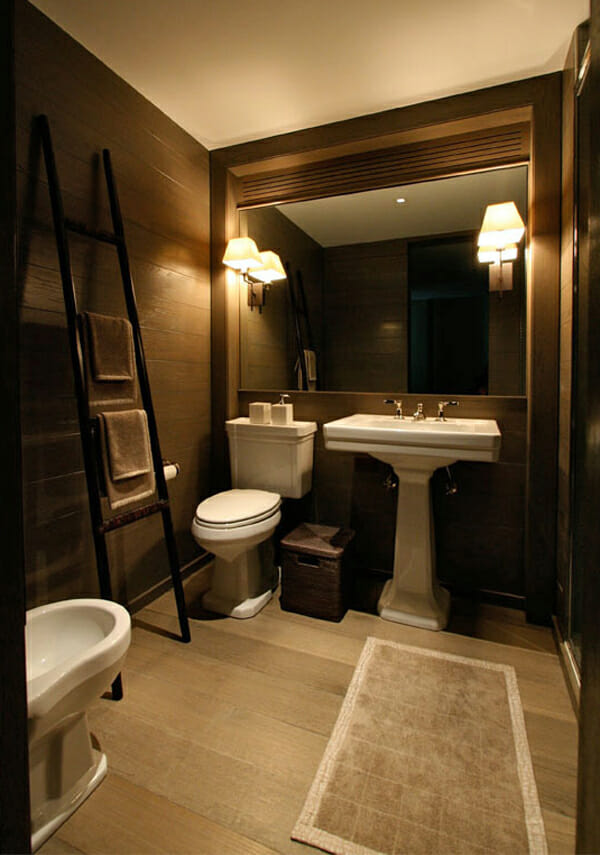
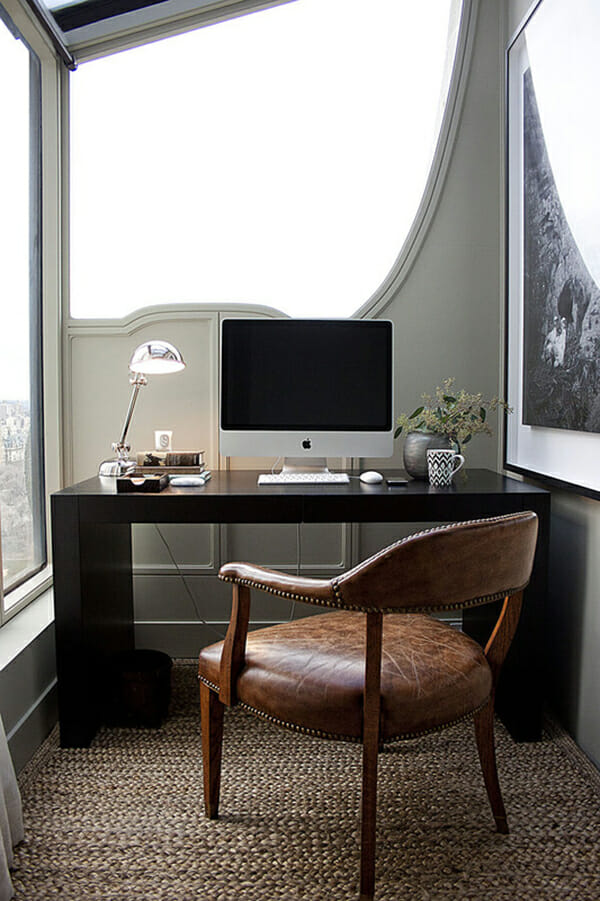
If you are focused exclusively on furnishings and are not planning any renovation work, you might see a cost proposal where you pay the designer 20% to 35% of the total cost of the merchandise you purchase, or you might see a cost structure that combines a flat fee with hourly fees or commission-based fees. At this level, your designer is providing a design vision with color and material selections, sourcing merchandise, and ensuring that pieces are delivered properly. All in, bare minimum, you might be able to do one room for $8,000 for design services and furniture, provided that you’re open to mixing thrift shop finds with national retailer-type pieces with a few select higher-end accents. With a more average budget, you can expect to spend $15,000 to $20,000 for design services and furniture selections for one room.
You might find that you can conserve costs by handling some of the purchase and delivery logistics on your own, but you should be realistic in your capacity and desire to do so. Art will arrive in the wrong frame and rugs will fall off the truck en route, so you need to be prepared for the follow-up that a designer would handle.
If you are looking for guidance with vision and finding particular items, you might decide to work with a designer on an hourly basis, which can range from $75 an hour to $250 and beyond, or you might agree to a flat fee for a “mood board” or “inspiration booklet”, where the designer provides you with layout, color, and material selections for the room but leaves the sourcing and buying to you.
Excerpt below from a design plan by Sweeten Expert Jill
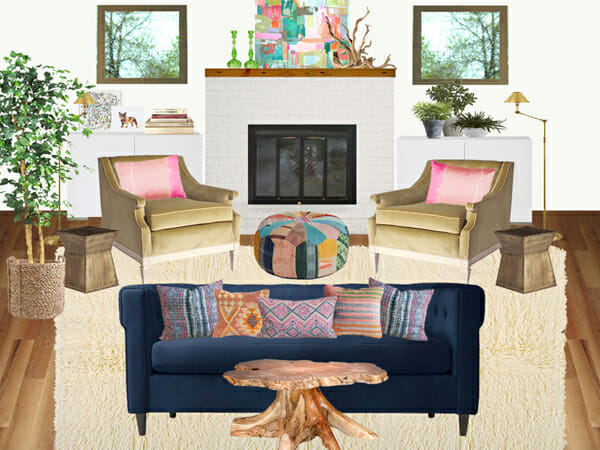
Renovate to live, Sweeten to thrive!
Sweeten brings homeowners an exceptional renovation experience by personally matching trusted general contractors to your project, while offering expert guidance and support—at no cost to you.
“Although I think clients find hourly fees easier to digest – and it can sound less expensive – I often find that the opposite is true. Clients often underestimate the time that goes into a project,” noted Jill. “I want to have the discretion to spend the time that may be necessary searching for the perfect piece without worrying about billing my client hundreds of dollars.”
Savings and Access
As you think about these potential upfront costs, you also have to consider two major benefits to working with an interior designer that might not be immediately obvious. My own personal “A Ha!” moment came when I realized that interior designers can tap into two of my most favorite life-long quests: hidden savings and access! Because of to-the-trade discounts and insider access to industry sales, an interior designer can save you up to 40% of the cost that you might otherwise pay for materials and furnishings. Joy cracked me up: “I take on the aspect of saving clients money like a game show participant! I go hard as though I’ve got to throw my hand on a buzzer!” So while you may be calculating the costs of working with a designer, the experts I talked with more than made up for those costs with savings that would be out of reach for most homeowners.
In addition to the value saved, an interior designer can get you access to items that you wouldn’t be able to get on your own, and can mix high-brow and budget items seamlessly, so that you are spending money on things that matter most to you. An interior designer will be able to get a custom piece that you will never see at a national retailer, and mix that splurge with vintage picks, or restore an antique or thrift shop find with a unique fabric to create a custom piece at a fraction of the cost. Jill warned that we should “be prepared for the price tag that to-the-trade and custom items have, even after a designer discount. There is value in beautiful, quality made items and I love to support the people making this work. However, I try to provide all of my clients with some special and unique pieces, no matter what their budget is.”
Photos below featuring work by Sweeten Expert Jill
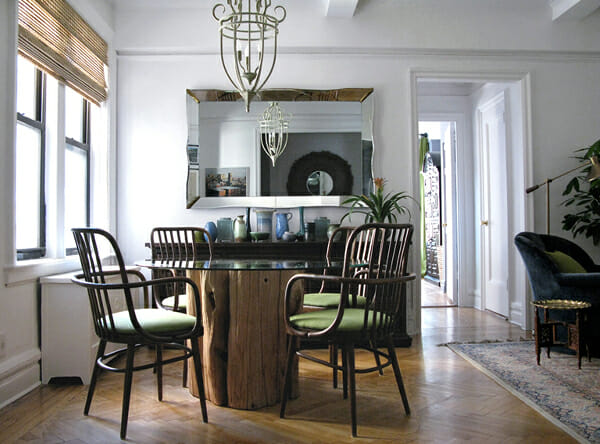
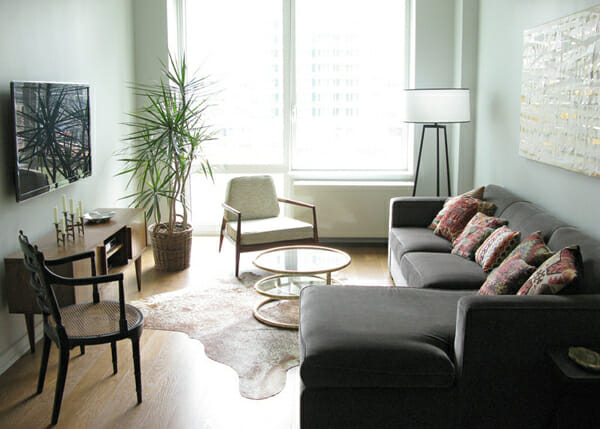
More wise words from these wise ladies
Joy, Maneli, and Jill each shared super insightful guidance to keep in mind if you are planning a design upgrade. Jill offered savvy guidance for homeowners who are feeling unsure about their financial ability to replace an entire room of furniture at once, “work with a professional to create a design plan that can be executed over time as funds become available.” She also recommends not to forget about accessories, the “final layer” that can really make a house your home. “Arrange a vignette of interesting or meaningful items, hang some art and bring in some greenery – a large plant can really add life and sculptural interest to a room.”
Joy highlighted the key role that timeline can play in a budget. If you have time for your designer to find the right pieces and pay for standard shipping, you will get the look you want without paying a premium to rush orders. Lead times for custom pieces and shipping fees can balloon if you are on a deadline.
Maneli suggested that homeowners planning extensive renovation and design work should think about their budget in two buckets: one budget for the materials that will come with them when they move (furniture, art, drapery, etc.) and one budget for the materials that will stay with the house and add to its re-sale value (permanent features like lighting fixtures, wall treatments, custom millwork, etc.). By grouping expenditures that way, you can decide what to allocate for things you will keep for decades, and what you will invest in the value of your home.
Photos featuring work in Williamsburg by Sweeten Expert Maneli
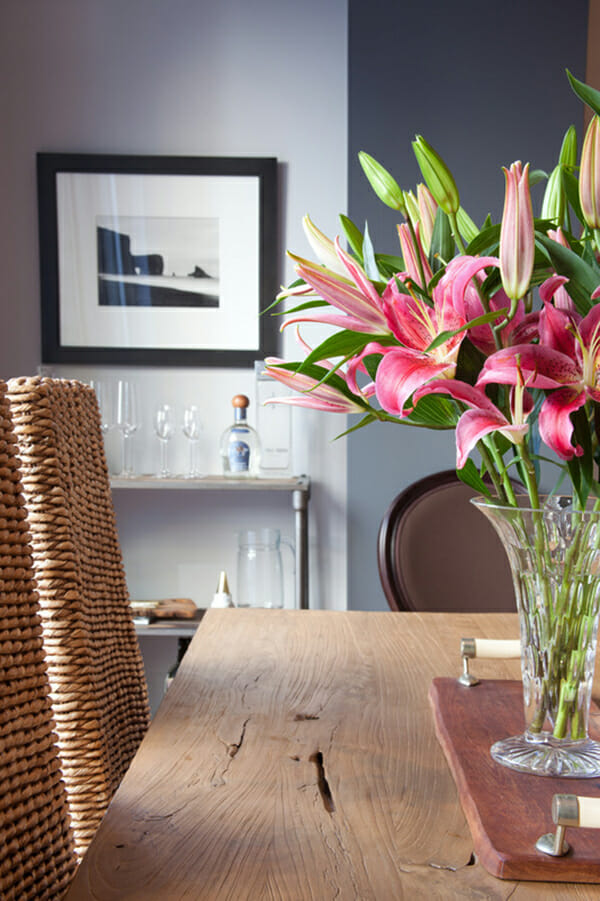
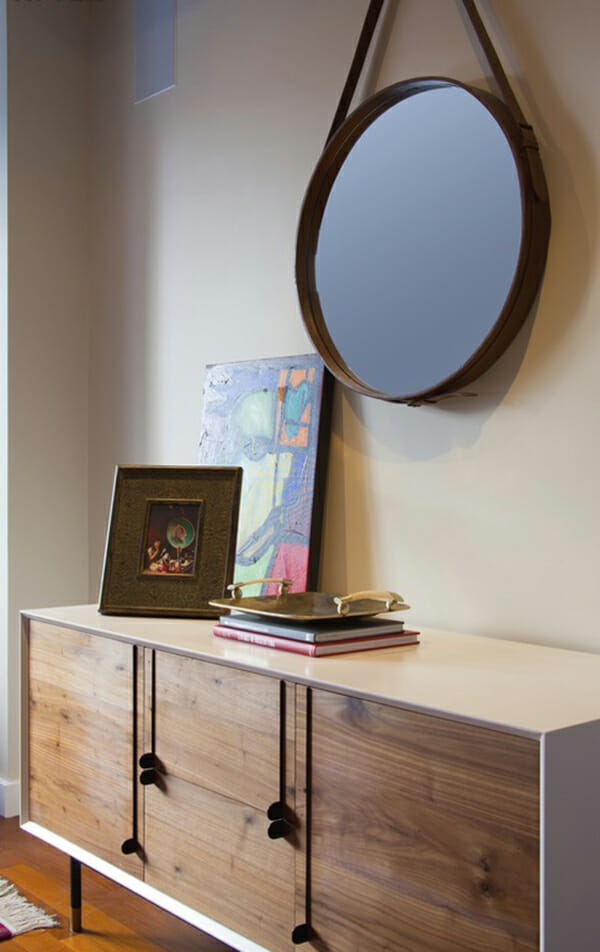
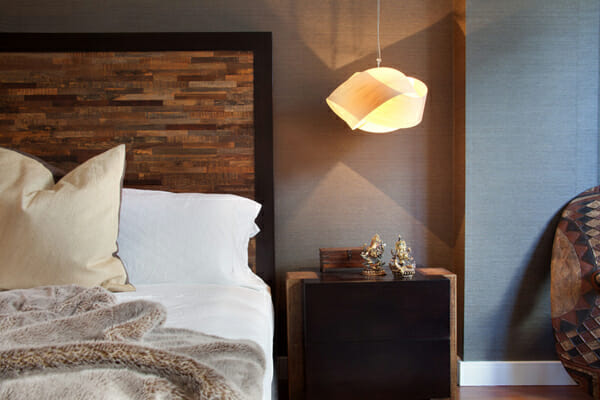
If these photos aren’t enough to convince you that you need an interior designer in your life, take a look at our quick cost re-cap below, and get started with your project on Sweeten!
Interior Design Costs: Key Considerations
~ If you are gut-renovating, plan for $10 per square foot in design services alone.
~ If you are replacing furniture, plan to pay 20-35% of the net cost of your merchandise purchase.
~ If you are looking for ad hoc design help, plan to pay $75 to $250 per hour of consultation.
~ Remember that designers get to-the-trade discounts that can save you between 20 and 40% off the retail price.
~ All in, you should plan for an average of $15,000 to $20,000 for a full room re-do, and account for shipping costs and premiums you might pay if your timeline is tight.
How much does an interior designer cost?
If you’re doing a gut home remodel, expect to pay $10/square foot for full interior design services. Not remodeling? For any furnishing purchased with design help, expect to pay a 25-30% fee of the total cost of the merchandise you purchase. To reenvision a room and pick materials, interior designers in NYC will charge on an hourly basis: $75-$250+.
How interior designers charge
There are 3 common ways interior designers charge clients. The first is to charge a flat fee for different service packages. These packages are tailored to the needs of the client. The second is to charge an hourly fee for any consultation and site visits. The third way is to add a 20%-35% markup on purchases and services (such as contractor oversight), or a commission based on the cost of planned construction if the client is renovating. An interior designer might also charge clients with a mix of these options, which provides more flexibility.

